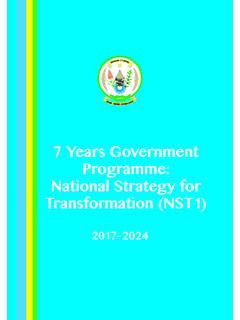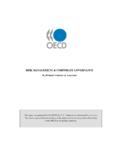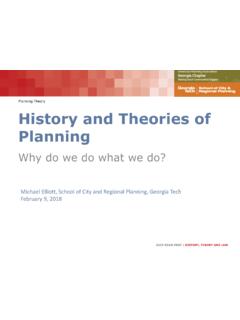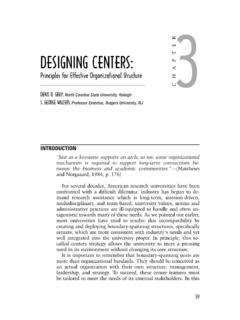Transcription of Knowledge and Teaching: Foundations of the New Reform
1 Knowledge and Teaching: Foundations of the New Reform LEE S. SHULMAN Stanford University Lee S. Shulman builds his foundation for teaching Reform on an idea of teaching that emphasizes comprehension and reasoning, transformation and reflection. "This emphasis is justified," he writes, "by the resoluteness with which research and policy have so blatantly ignored those aspects of teaching in the past." To articulate and justify this conception, Shul man responds to four questions: What are the sources of the Knowledge base for teaching?
2 In what terms can these sources be conceptualized? What are the processes of pedagogical reasoning and action? and What are the implications for teaching policy and educational Reform ? The answers informed by philosophy, psychology, and a growing body of case work based on young and experienced practitioners go far beyond current Reform assump tions and initiatives. The outcome for educational practitioners, scholars, and policymakers is a major redirection in how teaching is to be understood and teachers are to be trained and evaluated.
3 This article was selected for the November 1986 special issue on "Teachers, Teaching, and Teacher Education," but appears here because of the exigencies of publishing. Prologue: A Portrait of Expertise Richly developed portrayals of expertise in teaching are rare. While many charac terizations of effective teachers exist, most of these dwell on the teacher's manage ment of the classroom. We find few descriptions or analyses of teachers that give careful attention not only to the management of students in classrooms, but also to the management of ideas within classroom discourse.
4 Both kinds of emphasis will be needed if our portrayals of good practice are to serve as sufficient guides to the design of better education. Let us examine one brief account. A twenty-five-year veteran English teacher, Nancy, was the subject of a continu ing study of experienced teachers that we had been conducting. The class was nearing the end of the second week of a unit on Moby Dick. The observer had been well impressed with the depth of Nancy's understanding of that novel and her skill as a pedagogue, as she documented how Nancy helped a group of California high school juniors grasp the many faces of that masterpiece.
5 Nancy was a highly active teacher, whose classroom style employed substantial interaction with her students, Harvard Educational Review Vol. 57 No. 1 February 1987 Copyright by President and Fellows of Harvard College 0017 8055/87/0200-0001$ 1 Harvard Educational Review both through recitations and more open-ended discussion. She was like a sym phony conductor, posing questions, probing for alternative views, drawing out the shy while tempering the boisterous. Not much happened in the classroom that did not pass through Nancy, whose pacing and ordering, structuring and expand ing, controlled the rhythm of classroom life.
6 Nancy characterized her treatment of literature in terms of a general theoretical model that she employed. Basically, I break reading skills into four levels: Level 1 is simply translation.. It is understanding the literal meaning, denotative, and frequently for students that means getting a dictionary. Level 2 is connotative meaning and again you are still looking at the words.. What does that mean, what does that tell us about the character? .. We looked at The Scarlet Letter. Hawthorne described a rose bush in the first chapter.
7 Literal level is: What is a rose bush? More important, what does a rose bush suggest, what is it that comes to mind, what did you picture? Level 3 is the level of interpretation .. It is the implication of Levels 1 and 2. If the author is using a symbol, what does that say about his view of life? In Moby Dick, the example I used in class was the boots. The boots would be the literal level. What does it mean when he gets under the bed? And the stu dents would say, he is trying to hide something. Level 3 would be what does Melville say about human nature?
8 What is the implication of this? What does this tell us about this character? Level 4 is what I call application and evaluation and I try, as I teach literature, to get the students to Level 4, and that is where they take the literature and see how it has meaning for their own lives. Where would we see that event occur in our own society? How would people that we know be behaving if they are doing what these characters are doing? How is this piece of literature similar to our common experiences as human beings? .. So my view of reading is basically to take them from the literal on the page to making it mean something in their lives.
9 In teaching literature I am always working in and out of those levels. (Gudmundsdottir, in preparation) Nancy employed this conceptual framework in her teaching, using it to guide her own sequencing of material and formulation of questions. She taught the framework explicitly to her students over the semester, helping them employ it like a scaffolding to organize their own study of the texts, to monitor their own thinking. Although as a teacher she maintained tight control of the classroom dis course, her teaching goals were to liberate her students' minds through literacy, eventually to use great works of literature to illuminate their own lives.
10 Whichever work she was teaching, she understood how to organize it, frame it for teaching, divide it appropriately for assignments and activities. She seemed to possess a mental index for these books she had taught so often The Red Badge of Courage, Moby Dick, The Scarlet Letter, The Adventures of Huckleberry Finn with key episodes organized in her mind for different pedagogical purposes, different levels of diffi culty, different kinds of pupils, different themes or emphases. Her combination of subject-matter understanding and pedagogical skill was quite dazzling.





